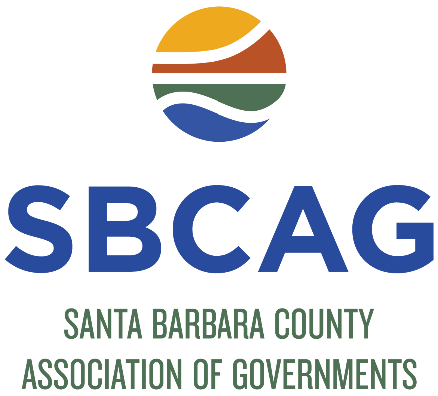Transportation Planning

The $11.3 Billion Regional Plan for How Communities Grow and People Travel
August 26, 2021
Santa Barbara County Association of Governments adopted Connected 2050, the Regional Transportation Plan and Sustainable Communities Strategy, which identifies how $11.3 billion will be invested over the next 30 years for the movement of people and goods.
Santa Barbara, Calif. – an 18-month process to bring about a vision for regional growth and development in Santa Barbara County concluded with the Santa Barbara County Association of Governments (SBCAG) Board of Directors adopting Connected 2050, the Regional Transportation Plan and Sustainable Communities Strategy, at their August 19, 2021 meeting. The plan was adopted 12-0 with Director Bob Nelson abstaining.
Connected 2050 is a long-range plan for the region’s future that balances transportation and housing needs with social, economic, and environmental goals. The final plan prioritizes bringing jobs to housing centers and housing to job centers, then making sure they are connected with transit service, bike paths, and pedestrian-friendly streets. The plan is required by state law and updated every four years.
“Connected 2050 provides the building blocks for how we, as a community, are going to grow and prioritize spending where people live, work, play and travel in our county,” said Holly Sierra, chair of Santa Barbara County Association of Governments. “More than a vision, it’s a plan that puts strategies to work to shape a better and more sustainable future for our county.”
The Santa Barbara County region’s transportation network consists of approximately 2,054 miles of maintained public roadways; 338 miles of Class I, II, and III bikeways, 13 public transit services and dozens of private transportation services; three railroad operators; five public-use airports; and one public harbor facility. Together they provide for the transport of people and goods in the region.
Connected 2050 identifies $11.3 billion available for transportation investments specific to Santa Barbara County from federal, State, regional and local sources over the next 30 years. Measure A, the local sales tax measure, accounts for 14 percent of the anticipated revenues. The total cost of projects in the plan is approximately $8.3 billion: $3.1 billion for highway and streets/roads projects, $2.6 billion for transit projects, $1.7 billion bicycle and pedestrian projects, and $81 million for rail projects. Projects such as road maintenance for sidewalk or bikeway improvements that cannot be categorized in a specific travel mode account for approximately $700 million.
Several new aspects were considered as part of the development of Connected 2050, among them, the recognition that the plan was being created within the same timeframe as the COVID-19 global pandemic which has had widespread impact on the transportation sector and how the public engaged in the development of the plan.
“COVID-19 has forced a transformation in how people traditionally define their workplaces and participate in their communities,” said Marjie Kirn, executive director of SBCAG. “Regional transportation planning agencies like SBCAG have been working for decades to accomplish what has occurred over last 18-months with remote work. However, Connected 2050’s vision is a future with expanded transit service and will require a careful analysis of the lasting impacts of remote work and the transportation industry on a regional scale in the years to come.”
The final adopted Connected 2050 Regional Transportation Plan and Sustainable Communities Strategy is available for the public to review and download along with the technical appendices on SBCAG’s website at 2021 Regional Transportation Plan. In the final, adopted Connected 2050 documents, the public can access more information about the regional goals, projects, and available resources that make up current and future priorities for the regional transportation network.
What is an RTP-SCS?
A regional transportation plan–sustainable communities’ strategy (RTP-SCS) is a federally required long-range transportation plan prepared by a metropolitan planning organization such as SBCAG and is updated every four years, and includes projections of population, household, and employment growth and travel demand, along with a specific list of proposed projects to be funded. Per California Senate Bill 375, SBCAG must also integrate land use and transportation strategies that will achieve California Air Resources Board (ARB) greenhouse gas emissions reduction targets that contribute to climate change.


 Connected 2050 Plan
Connected 2050 Plan
